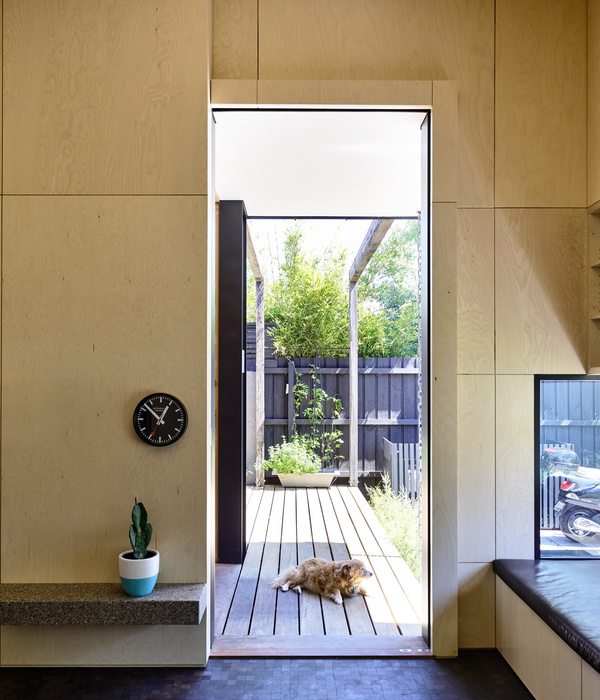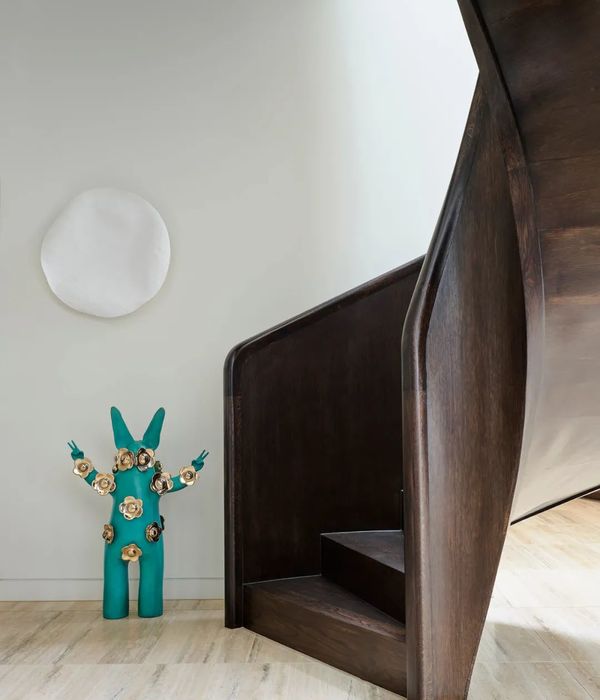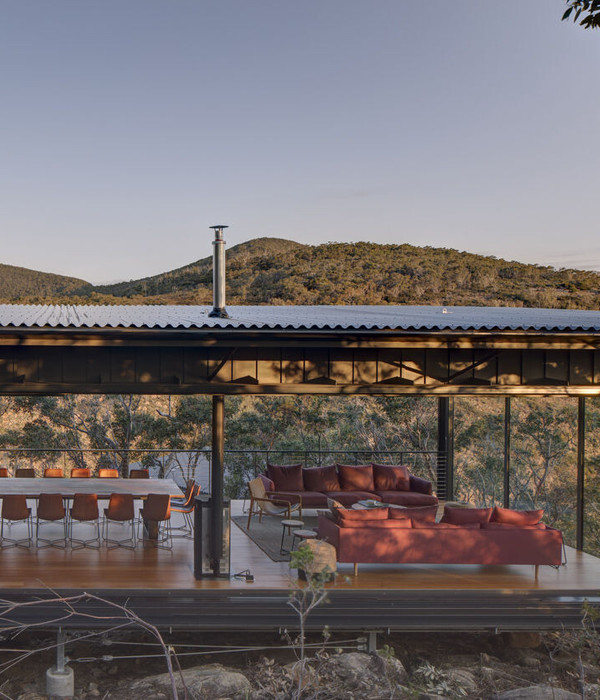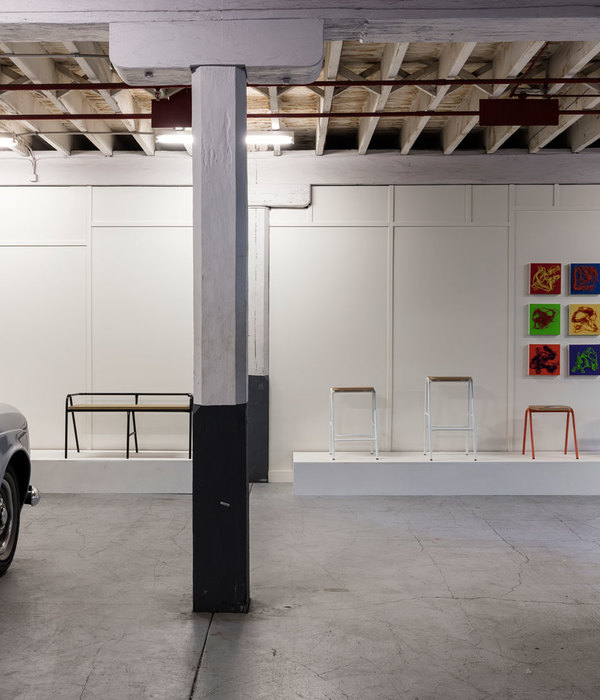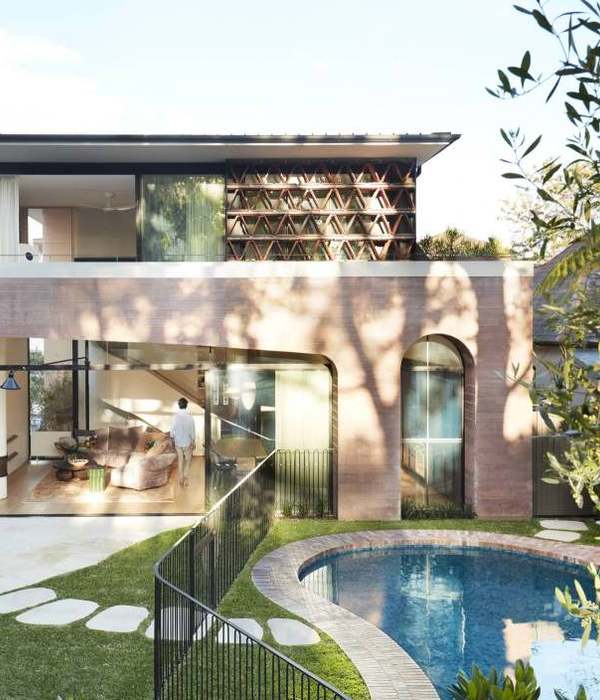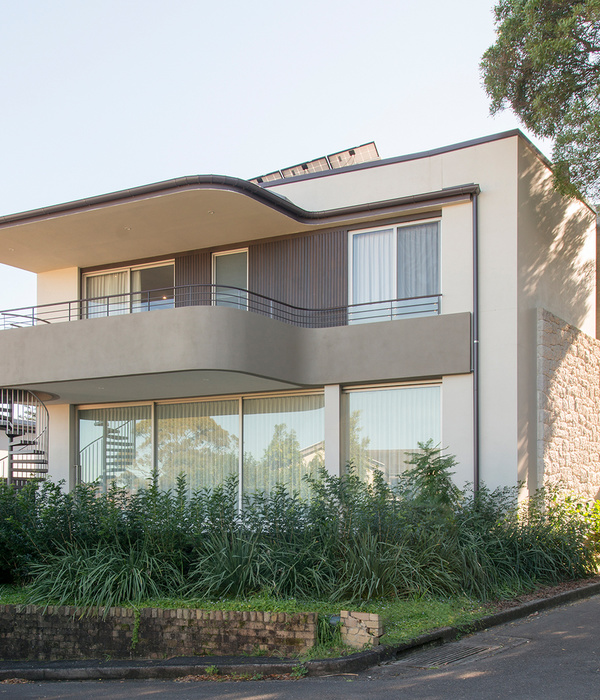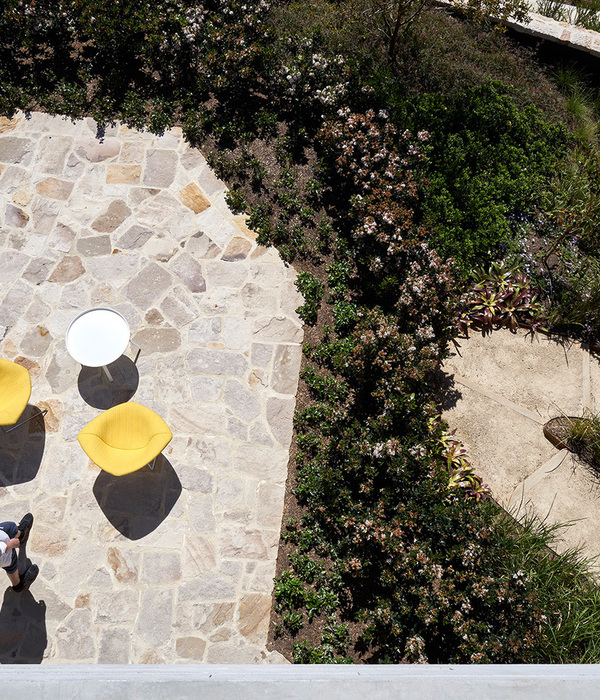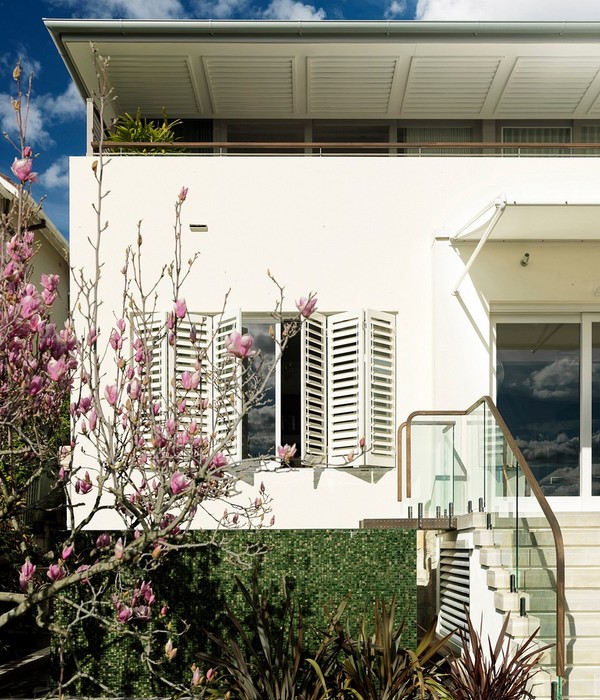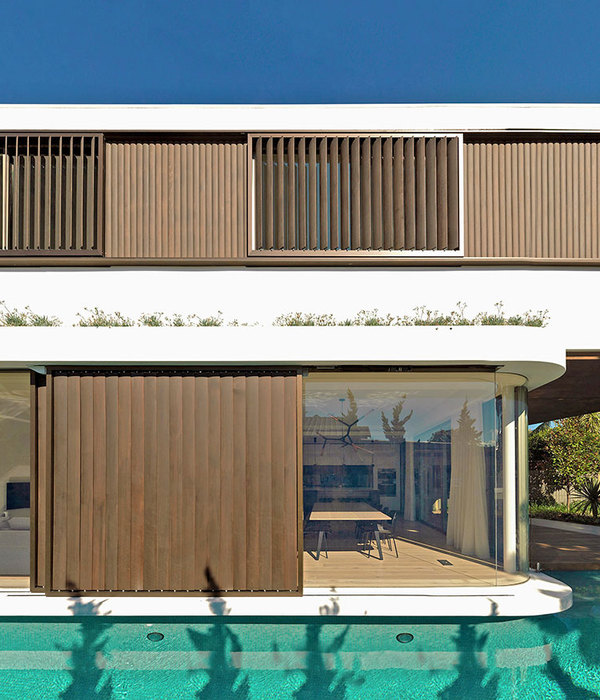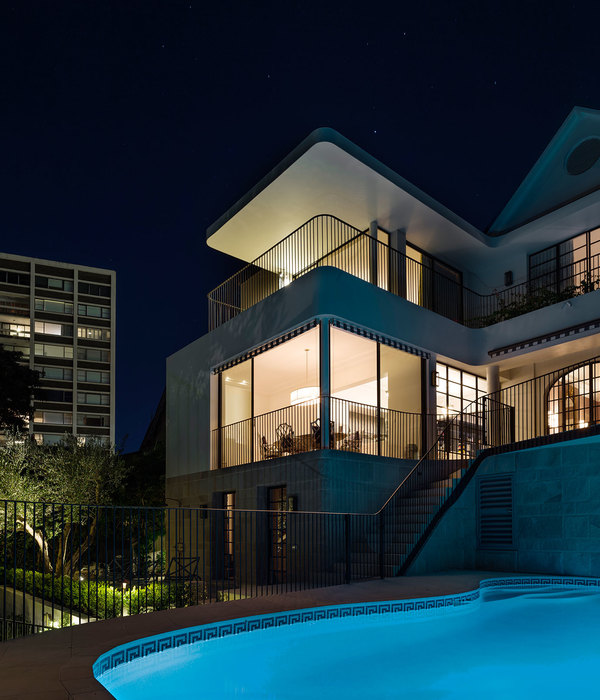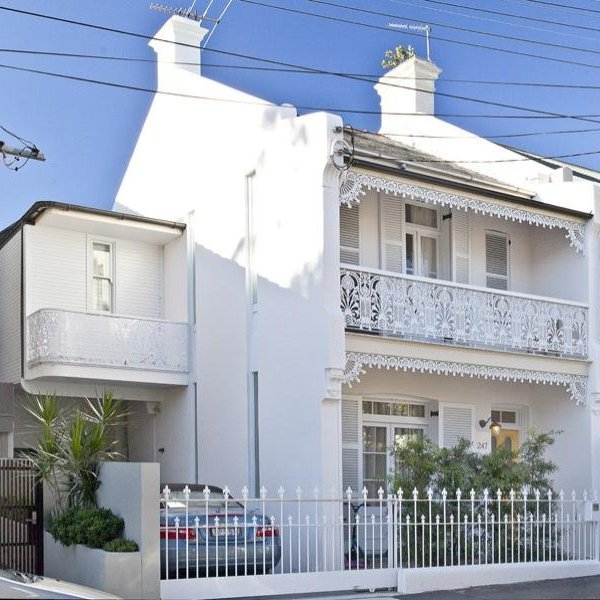© Nicholas Watt
尼古拉斯·瓦特
架构师提供的文本描述。一个低生态影响的家庭在海滩的家,尽量减少运作和体现的能量,有效地捕获和再利用水,鼓励生物多样性,也是一个健康的家,一个家庭享受。房子呼吸通过其中央肺-通风的双高度中庭空间,通过分层被动地将空气吸入房屋-一个传感器位于这个肺内,所以如果它的温度超过26度,被动通风口就会切换到混合模式,以帮助在更高的空气交换中抽出空气。
Text description provided by the architects. A low ecological impact family home by the beach that minimised operational and embodied energy, efficiently captured and re‐use water, encouraged bio‐diversity and is also be a healthy home for a family to enjoy. The house breaths through its central lung – the vented double height atrium space which draws air through the house passively via stratification – a sensor sits within this lung so if its temperature exceeds 26 degrees the passive vents switch to hybrid mode to help draw out the air at a higher exchange of air.
© Nicholas Watt
尼古拉斯·瓦特
住宅被设计成三种不同的元素:第一元素是浮动盒,里面有卧室和浴室等私人功能。单元2是与周围环境相连的底层,第3单元是用于存储和在恶劣天气中作为次要公共空间的亚地形Loggia空间。
The dwelling has been designed as three distinct elements. Element 1 is the floating box which houses the private functions such as bedrooms and bathrooms. Element 2 is the ground floor that connects with the surrounding environment and Element 3 is the sub‐terrain loggia space that is used for storage and as a secondary communal space during inclement weather.
© Nicholas Watt
尼古拉斯·瓦特
每个元素都具有不同的功能,因此具有不同的热质量、隔热和遮阳策略,以优化空间在夏季和冬季如何被动地工作。
Each element is performs a different function and as such has differing thermal mass, insulation and shading strategies to optimise how the spaces act passively during both summer and winter.
房屋的设计可能符合生态原则,但如果居住者不知道如何操作住宅,以优化其热舒适性、日光、能源生成系统和材料的耐久性,那么住宅就无法充分发挥其潜力。因此,连接到所有者计算机并可通过内部通信仪表板访问的可更新的电子家庭用户指南通知用户应该在一年中的哪个时间和什么时候进行清除。同样,家庭用户指南提醒业主,当建筑物需要高压软管时,延长外部包层材料在严酷的盐雾环境中的使用寿命,以及商人的人数。家庭用户指南作为一个操作和维护手册,用简单的英语写,可以传递给未来的业主或商人,使他们知道如何运作。
A house may be designed in accordance with ecological principles, however if the occupants are not aware of how to operate the dwelling to optimise its thermal comfort, daylight, energy generation systems and durability of materials then the dwelling is not operating to its full potential. Therefore an electronic updatable home user guide that is linked to the owners computer and can be accessed via the internal communications dashboard informs the occupant of which windows and at what time of the year and day a purge should be implemented. Similarly the home user guide reminds the owner when the building requires a high pressure hose down to prolong life of he external cladding materials in the harsh salt spray environment and what the number of the tradesperson is to do it. The home user guide acts as an operations and maintenance manual written in plain English which can be passed onto future owners or tradespeople so they know how the building is to operate.
© Nicholas Watt
尼古拉斯·瓦特
Architects Alexander Symes Architect, G+V architecture
Location Austinmer, Australia
Category Houses
Project Team Alexander Symes, Furio Valich, Marc Orberhauser, Alicia Pozniak, Julian Carrasco, Edwin Venegus
Area 252.0 m2
Project Year 2012
Photographs Nicholas Watt
Manufacturers Loading...
{{item.text_origin}}

